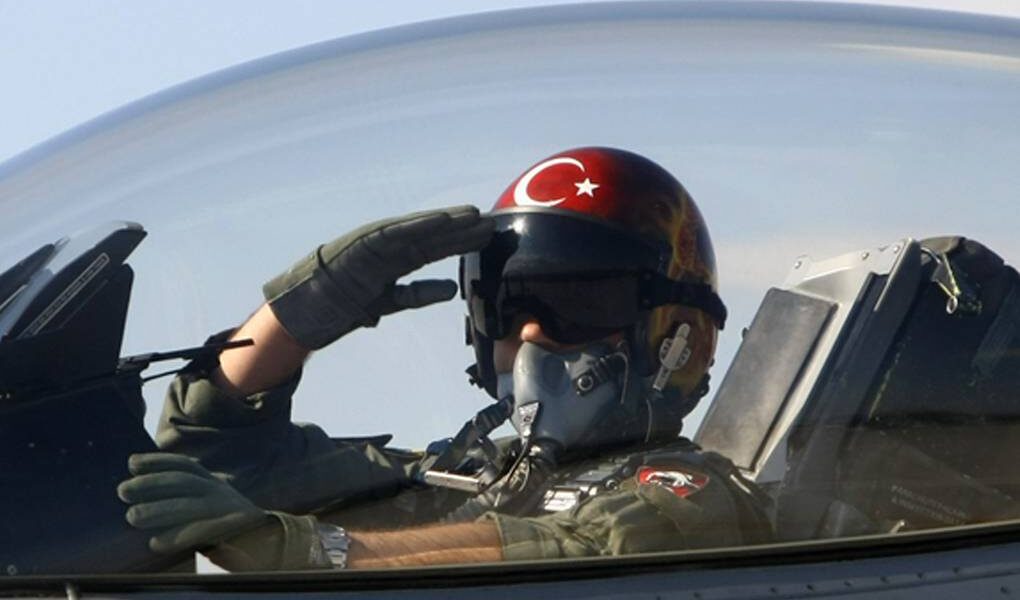There has been an obvious change in the behavior of the Turkish air invaders noticed during these days of crisis with the Turkish Oruç Reis research vessel. The Greek Air Force, all this time was (and still is) in full operational readiness, with its aircraft "loaded" with their weapons and crews on alert. The composure, the professionalism and determination of Greece's F-16, F-4 and Mirage pilots made the difference, especially because these days strange things happened in the skies of the Aegean that were dangerous.
For example, in the many dogfights that took place, Turkish pilots often dropped flares to escape the clutches of Greek fighters or to escalate tensions. Both Turkish F-16s and CN-235 naval co-propeller helicopters have recently dropped flares. What exactly happened?
A senior Greek military official explained to To Vima that the launching of flares by Turkish aircraft's is usually done to save the Turkish pilots from being intercepted by the Greek fighter jets.
"It's a sign of panic," he said.
An interception usually starts from high in the air, continues lower and when there is a virtual air battle then the intercepted Turkish aircraft descends low to the surface of the sea to avoid the worst.
Another strange fact observed by Greek pilots flying the F-16 and Mirage-2000-5 fighters is that a small number of older Turkish pilots, with "gray hair" as the pilots say, often appear in the Aegean. The Turkish Air Force has actively recalled retired pilots, who were either demobilized by Turkish President Recep Tayyp Erdoğan himself as suspects in the failed 2016 coup attempt and reinstated, or demobilized due to age. Some of the gray-haired pilots may have worked in civil aviation, particularly with Turkish Airlines, before being drafted.
But the strangest thing that happened in the Aegean sky in recent days was the new orders that Turkish pilots received from their superiors. They were told that due to the crisis of Oruç Reis violating Greece's continental shelf and the fact that the fleets of the two countries were facing each other, they need to spend as as much time as possible in Greek airspace, even when Greek fighter jets stop them from staying.
Thus, there were incidents where Turkish pilots remained illegally in Greek airspace until they almost ran out of fuel and searched in a rush for a Turkish coastal airport to safely land in before crashing.
Another strange incident is that for several days Turkish naval cooperation helicopters were looking for something in the sea area near the Greek island of Rhodes. No one knew what the Turks had lost. According to one version, a Turkish submarine for an unknown reason stopped sending a sub note and they were looking for it. Eventually the submarine activated its signal and the Turks found it.
What matters is that Greece is not alone in this whole process. In addition to four UAE F-16s and the support aircraft that came to Souda for joint exercises with Greek F-16s, other U.S. warships also appeared. To Vima were informed that the USS Philippine and US Winston Churchill were coming to Souda. There will also be other exercises in the Eastern Mediterranean and in the Exclusive Economic Zone of Cyprus.
Meanwhile, on Tuesday, Greek Defense Minister Nikos Panagiotopoulos held talks with NATO Secretary General Jens Stoltenberg, as part of the European Union Defense Ministers' Meeting. Relations between Greece and Turkey are tense, especially as Athens does not accept one NATO member country provoking and threatening another, as Ankara does on a daily basis. Greek Prime Minister Kyriakos Mitsotakis recently pointed this out, and the Minister of Defense also pointed it out.

